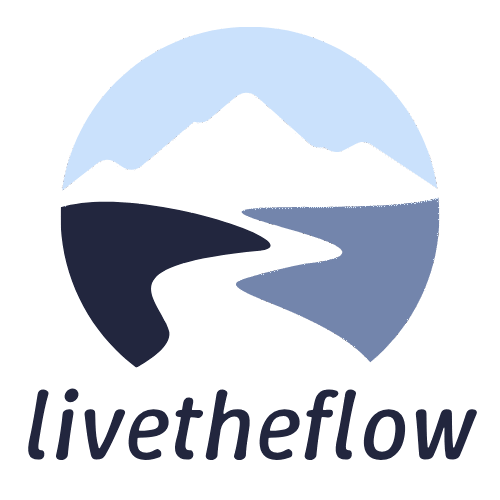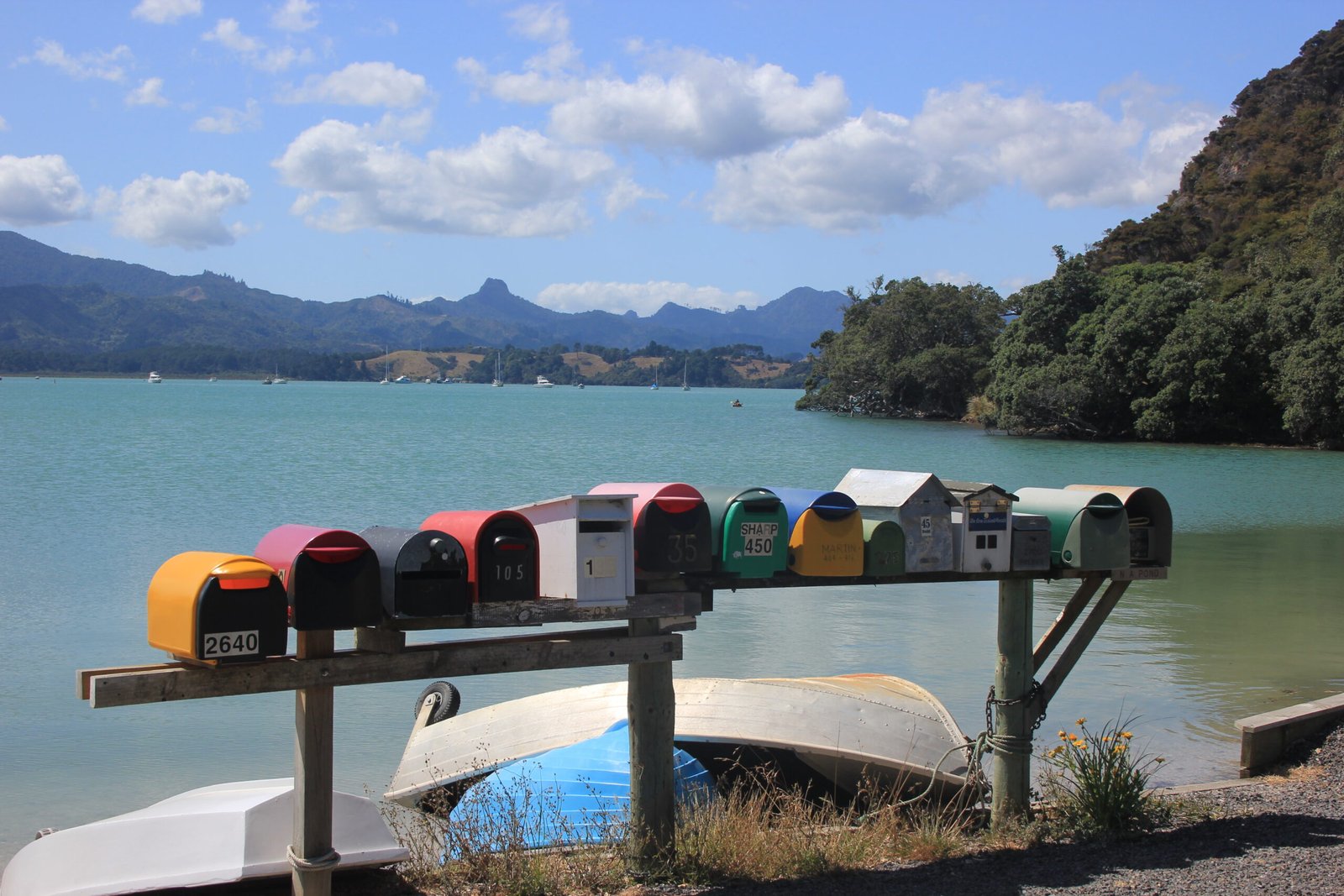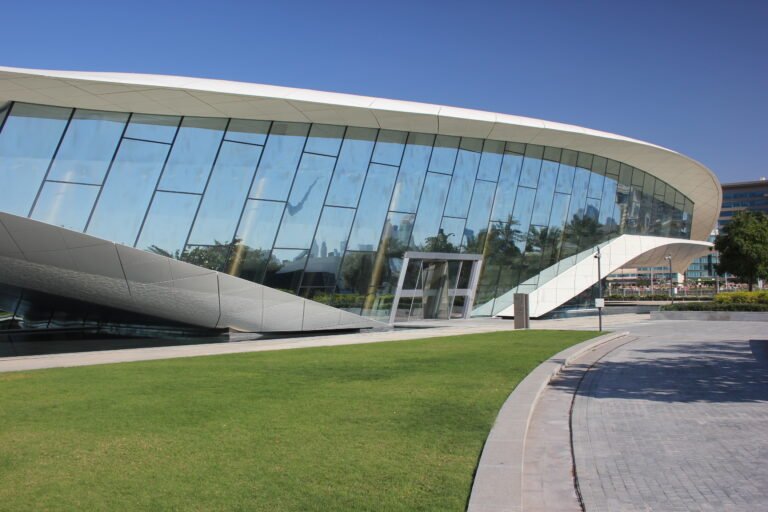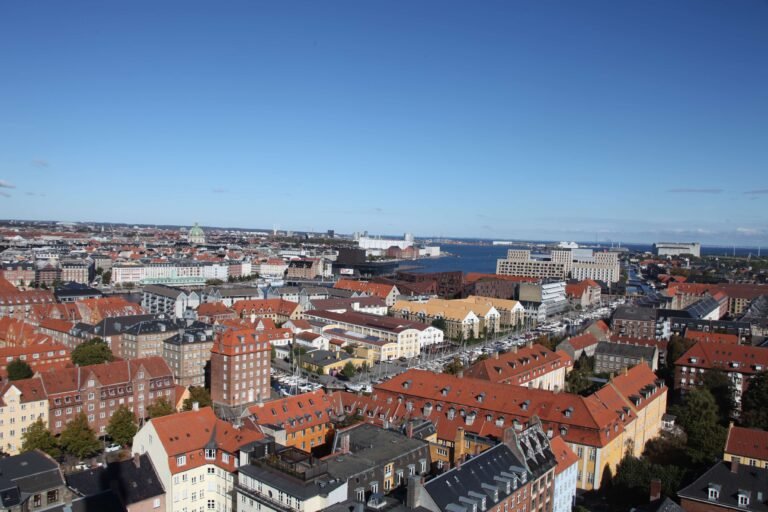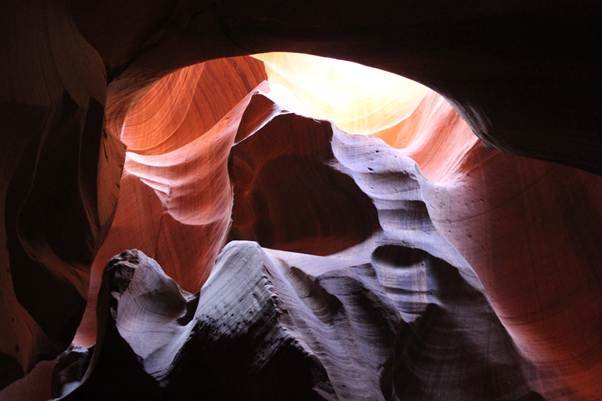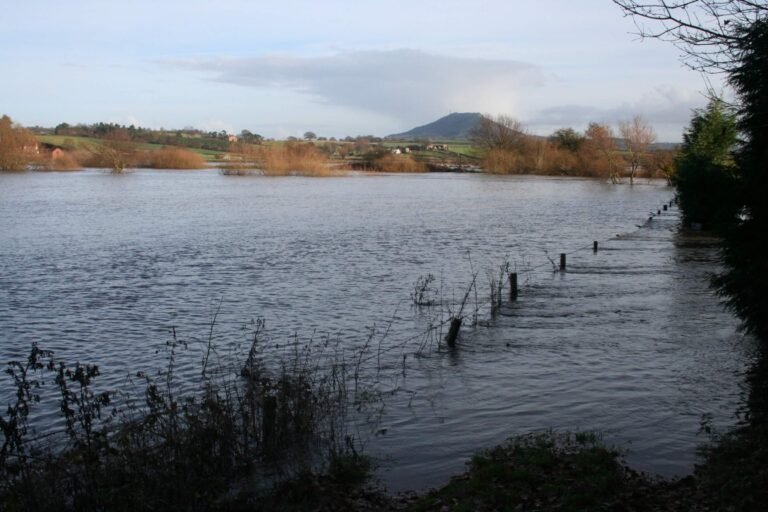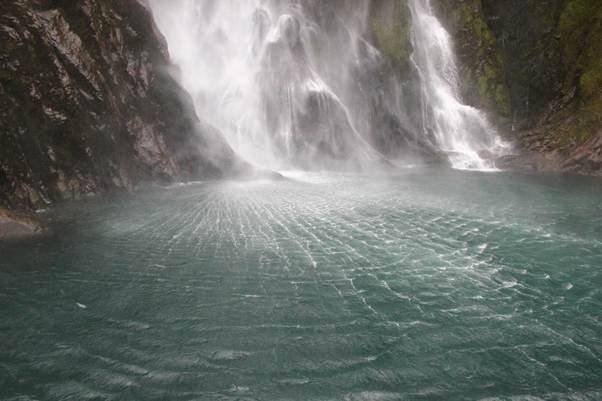A New Zealand Return 2020
1. MORE OF AUCKLAND AND THE NORTH ISLAND
It was on 29th November 2017 after a wonderful five-week visit, that I looked down on the coast of New Zealand and thought: “I’ll never go there again.”
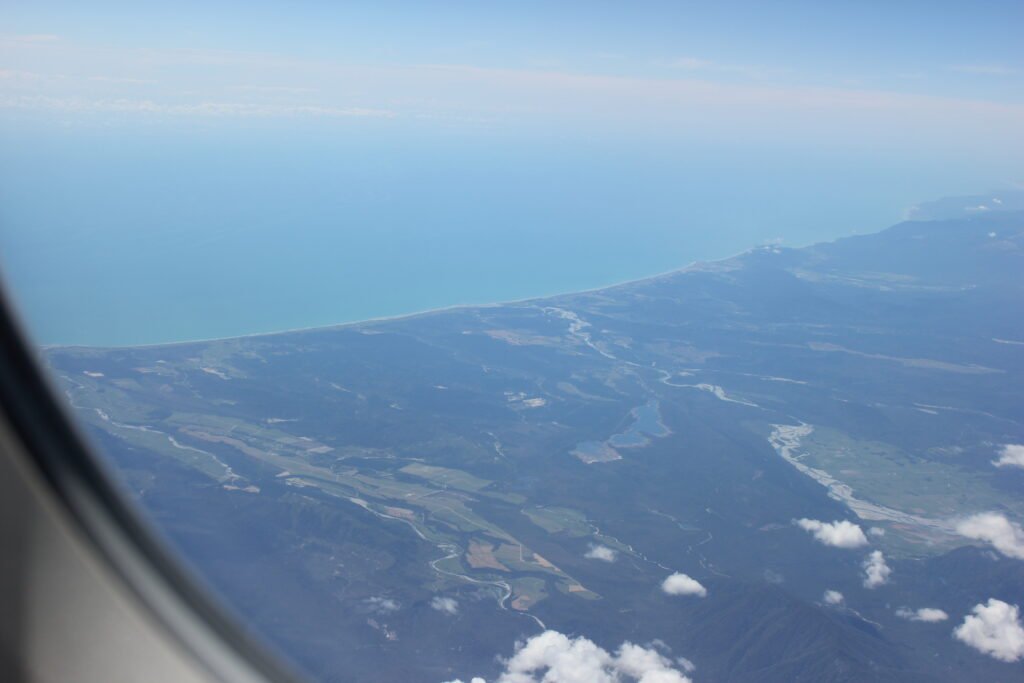
However, over two years later, Matt took a job offer in Auckland completely out of the blue. We had a welcome excuse to return to New Zealand in 2020.
1. EXPLORING AND ENJOYING AUCKLAND
On our first visit in 2017, we spent two nights and one jet-lagged day in Auckland. This time it was 17 days with the family before we went on a little tour by ourselves, with the family joining us at weekends.
New Zealand has a population of just under 5 million. Around 1.6 million live in Auckland, which occupies a narrow strip of land between two large natural harbours. One, Waitemata, on the northeast side, opens to the Pacific Ocean. The other, Manukau, on the southwest side, opens to the Tasman Sea. It takes four hours to walk the north / south route from one to the other.
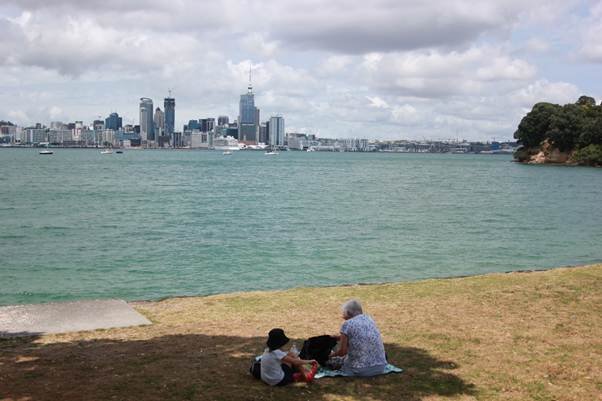
The city has a staggering 2,300 miles of coastline. With its 1.6 m inhabitants, that’s around 7 feet each! There are about 82 beaches and about 50 extinct volcanoes in Auckland! For these reasons, a good number of residential areas are very attractive. Many have views of the sea. The family lived in a three-bedroom bungalow adjacent to their landlord’s house, whose grounds go down to a creek off a saltwater lake. It is a very attractive area, about a 20 – 30-minute drive from the city centre.
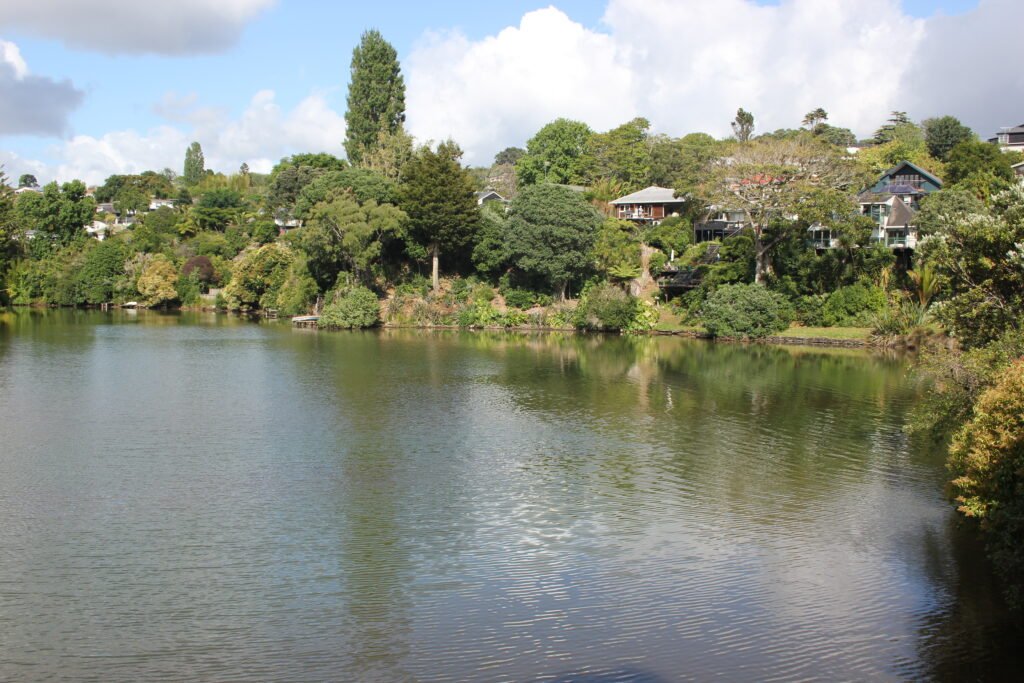
Just up the road was their impressive school.
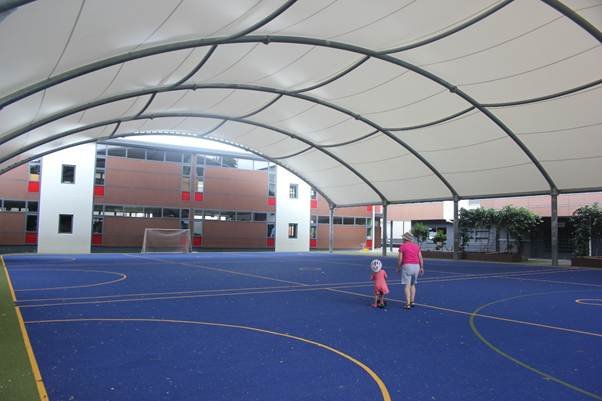
It was built on either side of a gulley with a stream which they had planted and made into an award-winning environmental area: the first primary school to reach ‘Beyond Green Gold’ status – sounds good!
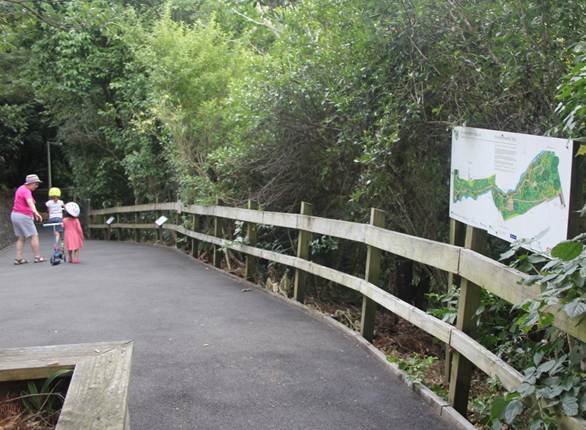
Before the summer holidays finished, we went out and about with the family, enjoying January temperatures of 25 – 30C. We saw this amazing Moreton Fig Tree [no known connection to Moreton Hall in our village in Weston Rhyn!] in the Park near the National War Museum. There’s an even larger one at Pahi.

We went to a fantastic indoor play area and spent some time in an art gallery.
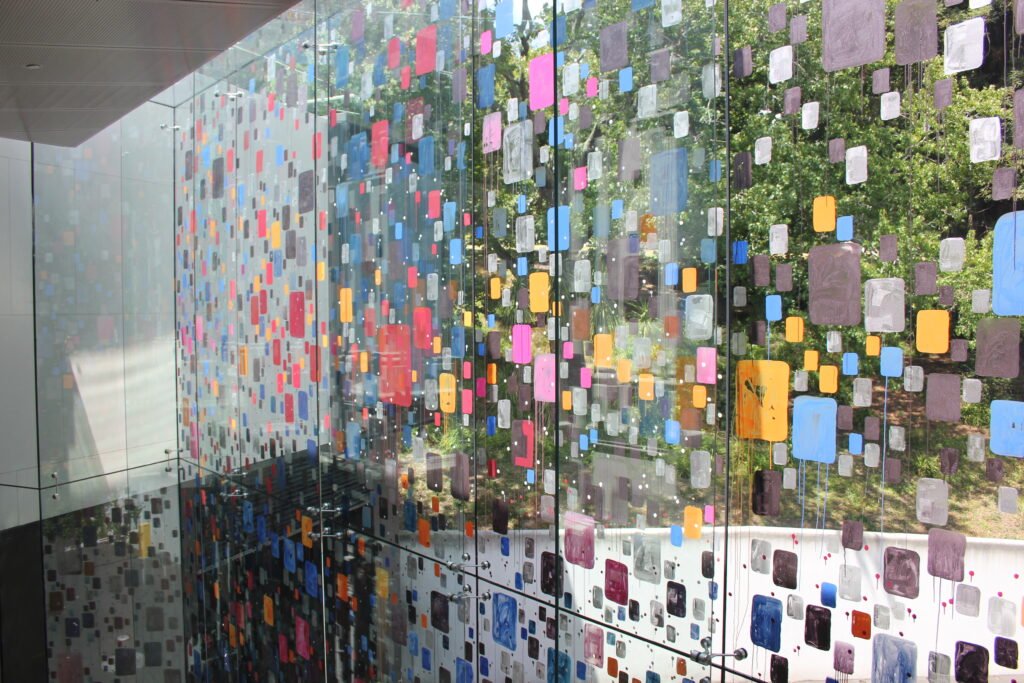
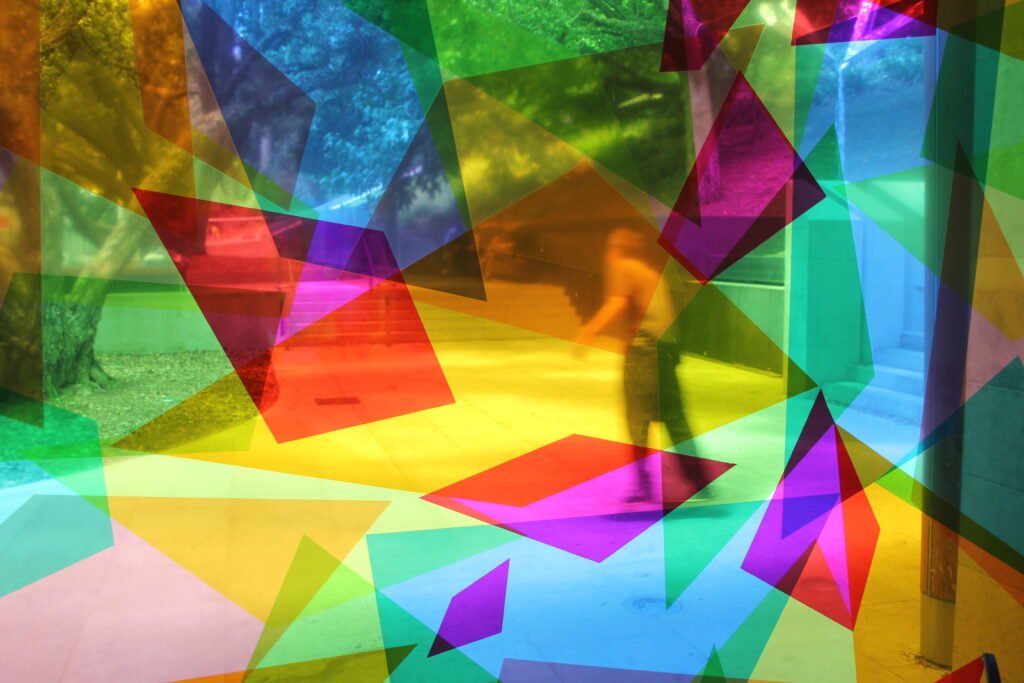
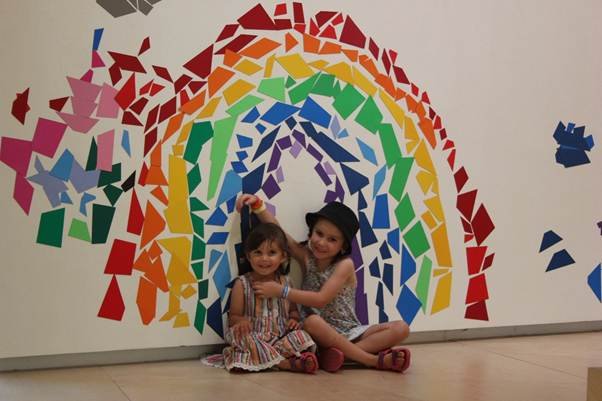
Another great day out was to the Waitakere Ranges National Park on the west coast not far from Auckland.
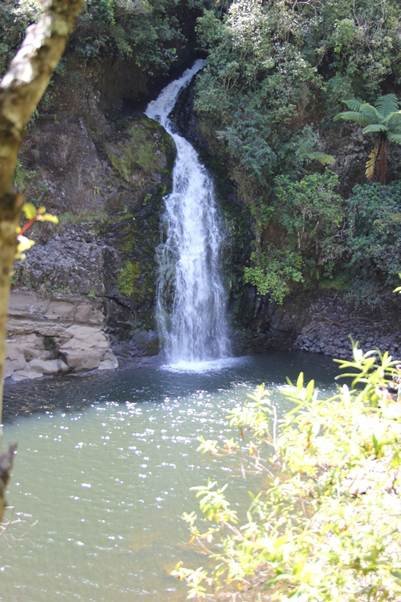
Our short tropical rainforest walk was followed by time at the seaside nearby.
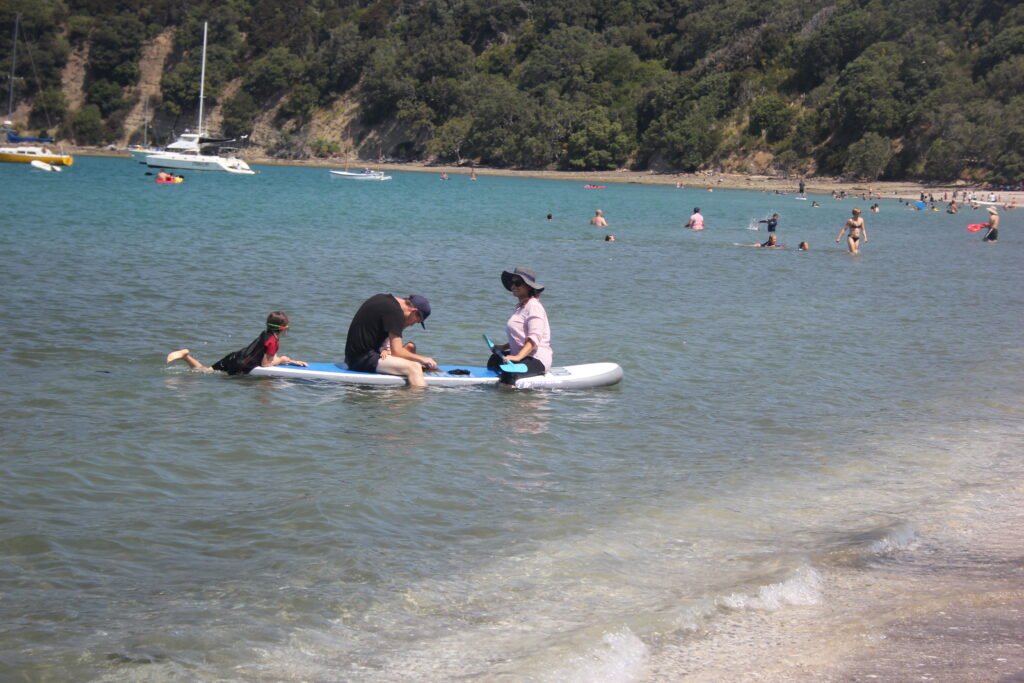
En route, breath-talking scenery explained why we fell in love with the country a few years before.
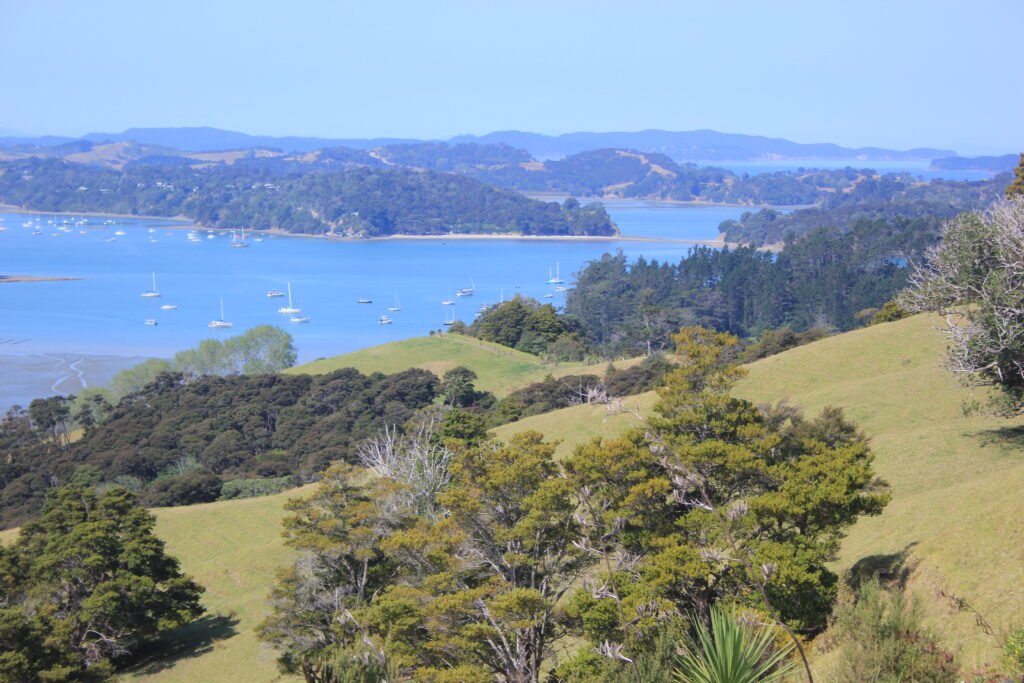
We had a laid-back and enjoyable couple of family weeks. We saw a lot more of the prosperous parts of Auckland. We visited a mix of low-key tourist places and did some ordinary Kiwi things.

These included visiting various Parks including the notable Cornwall Park where there are some wonderful trees within a wider area of farmed parkland at the foot of one of the city’s larger dormant volcanoes.

We climbed to the peak of Mount Eden, the largest and highest of these dormant volcanoes with unparalleled views across the city.
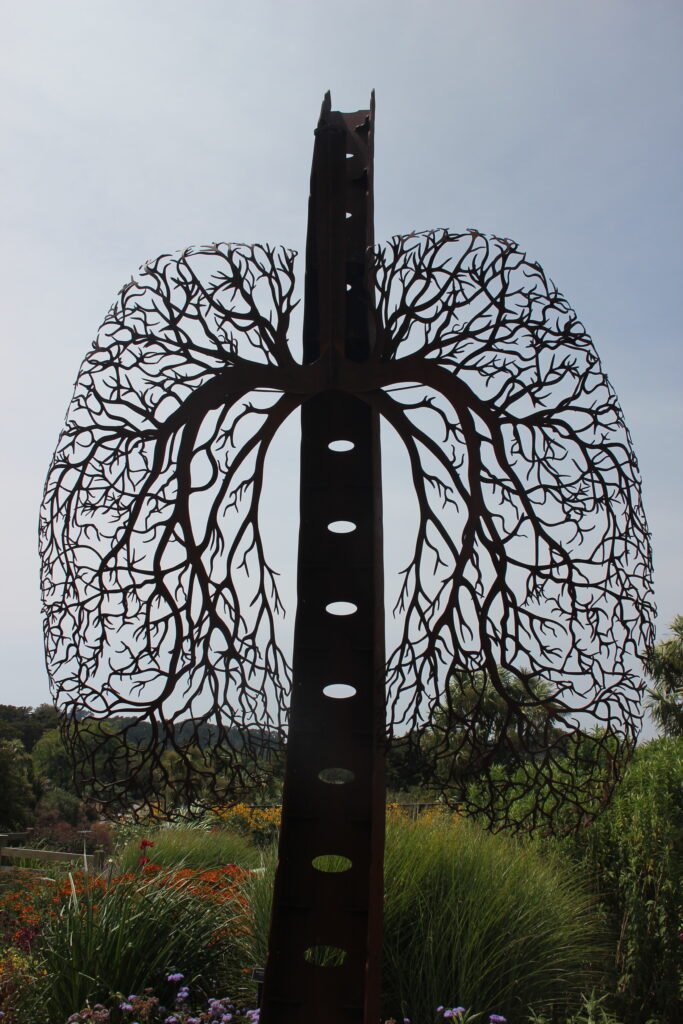
We enjoyed the city’s Botanical Gardens, where there are many interesting sculptures, including this representation of a tree / our lungs.
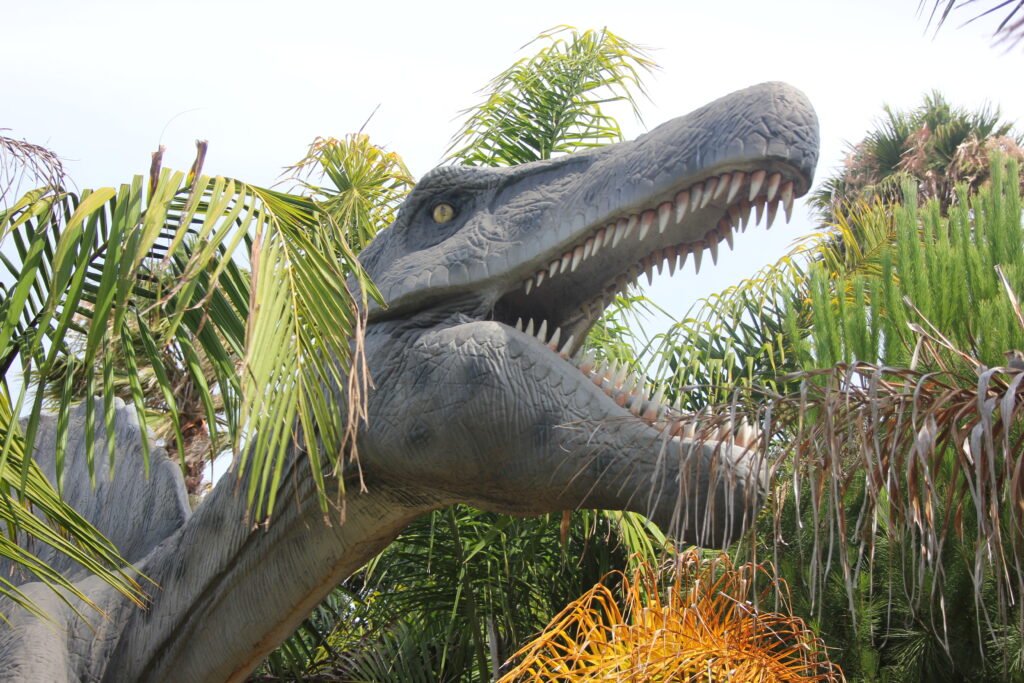
The kids greatly enjoyed the Dinosaur Park at Butterfly Creek after an early scare when this one started moving its head and issuing a deep throaty roar!
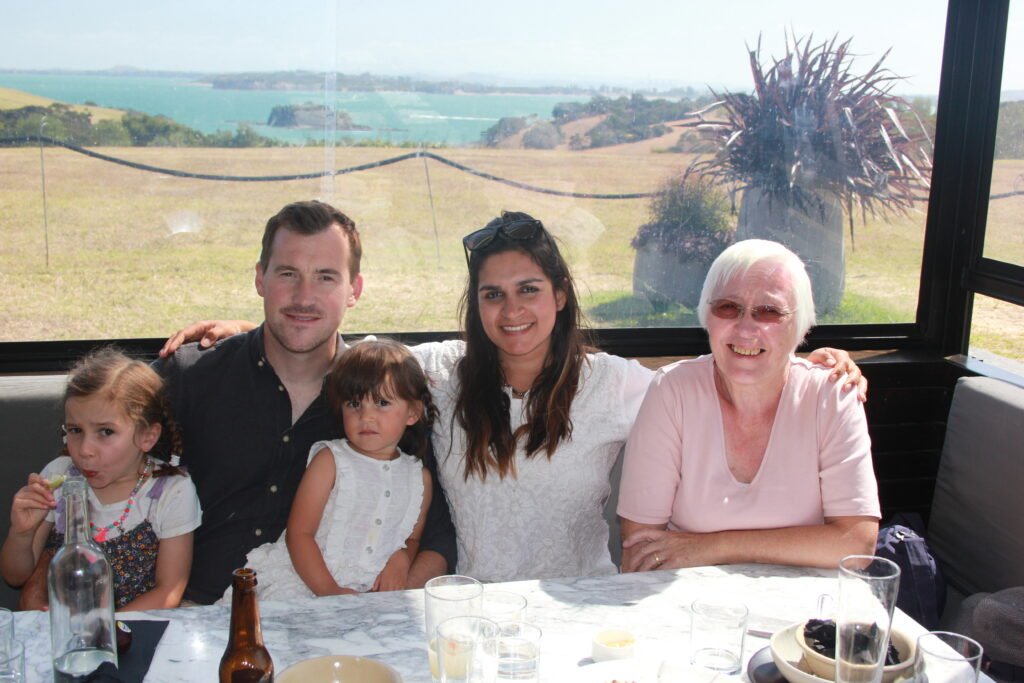
Finally, we had a special trip by ferry out for a meal at a vineyard on Waiheke Island to complete the NZ family bit of the celebration of Grandma’s 70th birthday.
Visiting places like New Zealand later in life encourages reflection on personal life choices …. what if I had made different choices years ago? Would I be the proud owner of a lovely coastal Auckland House, a Bach*and a yacht?! [*Bach is the name for a modest beach house… but over time many of these have become expensive and luxurious second homes for the rich!]
On balance, my life has been amazingly coherent and meaningful: a privilege. So, I’ll stick with Weston Rhyn where they experienced the “Storm of the Century” and where it was again very wet and cold while we enjoyed New Zealand!
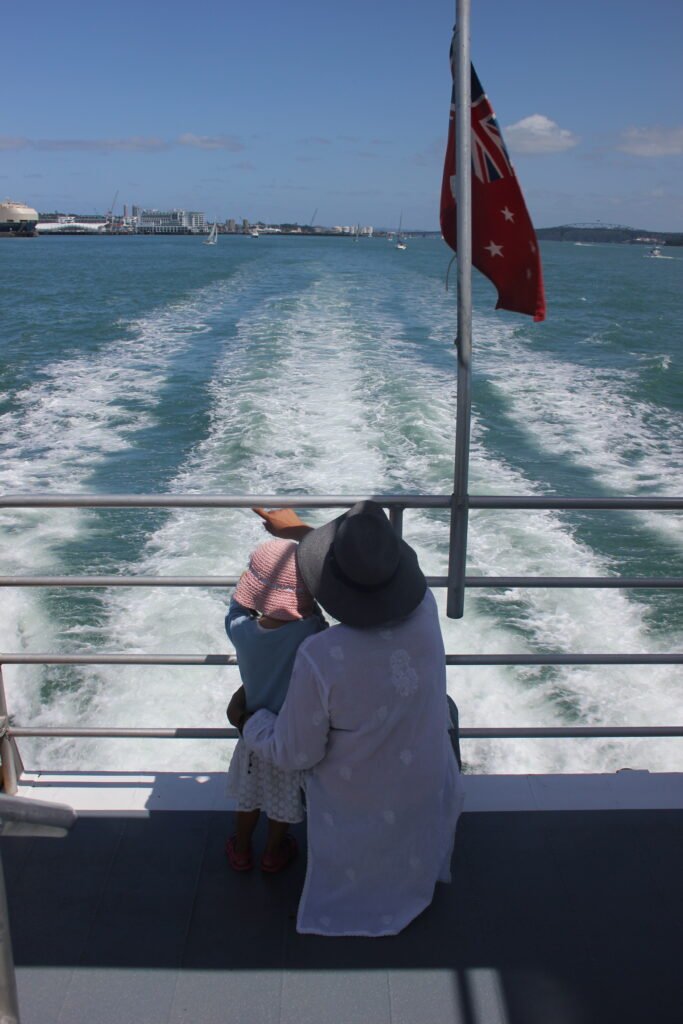
2. THE COROMANDEL PENINSULA: LIVING THE DREAM
Having spent about ten days with the family, enjoying and exploring Auckland. We left them to enjoy unfettered access to their normal weekly regime of ‘kindy’, school and work. We travelled slightly South and East to the Coromandel Peninsula. In crude terms, it is a 10 – 20 mile wide mountainous range rising to heights similar to Snowdonia and covered in temperate rain forest.
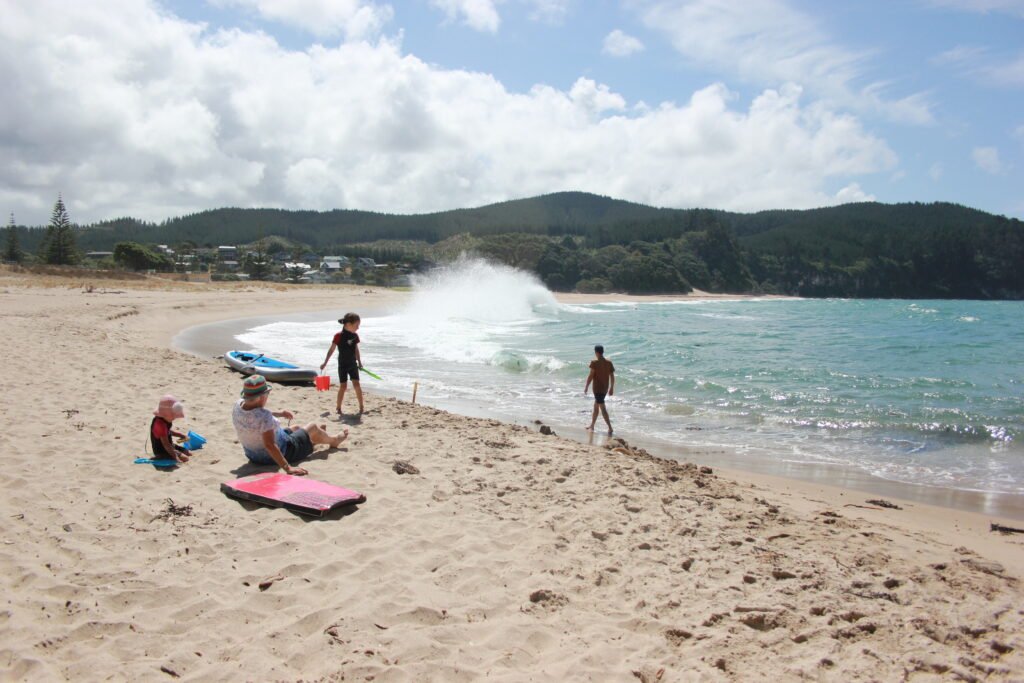
Our reality in New Zealand in February was such an utter contrast to what it was like for those at home in the UK in cold, very wet weather. At the time, it was tempting to play down our experience. We saw a couple of fleeting glimpses of rain, mostly barely noticeable drizzle: perhaps about 15 minutes in total over three weeks.
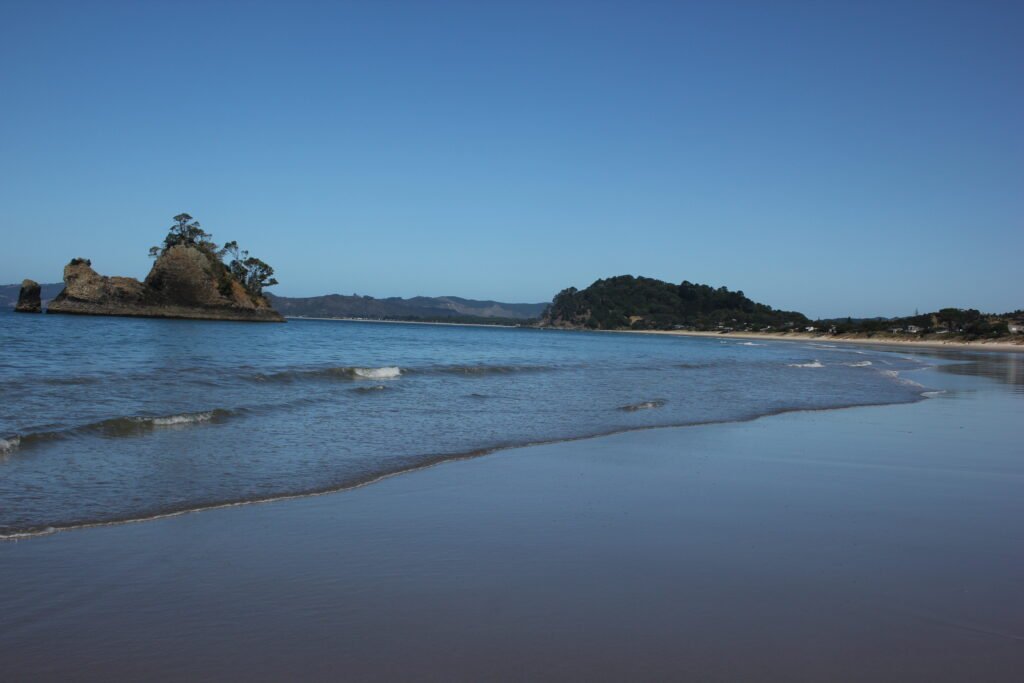
Being a peninsula, it is surrounded on three sides by miles of beautiful coastline with a large number of breathtaking beaches. Imagine the best of Cornwall, Pembroke and North Wales all rolled into one and add a temperate sub-tropical climate.

Our first four nights were in the small coastal town of Coromandel, that gives its name to the whole peninsula. We had an Airbnb “room” in a fabulous home with its own pool. They kept the pool cover on during the day to reduce evaporation! The water was 32 – 34C. Drought water use restrictions were in place. Pool and poolside relaxation was just the ticket alongside exploring the area.
We took a quirky rail journey up through the forest to a great viewing point. It was originally started by a potter to fetch clay down to his pottery. When people began to ask for rides he got the vision for this tourist attraction and conserving the adjacent forest. He spent his whole life building this railway largely by himself. The second photo brings a whole new meaning to the term ‘bottle bank’. The construction work would have been very thirsty!


We also visited three other local tourist attractions. New Chums Beach, only accessible by boat or a 40 minute walk is said to be one of the best in the world.

We visited Cathedral Cove by boat. Three hours sailing, a real treat!


Being relatively close by, we also made a quick visit to Hot Water Beach, along with a hundred or so others. If you dig in the right place at low tide, you can have your own thermal pool as hot spring waters rise to the surface through the sand.

After our first week of touring by ourselves, the family joined us for the weekend. We rented a Beach Bach in the small coastal community of Onemana. The original Beach Bach (pronounced ‘batch’) was a modest shed-type holiday home. With the low population and loads of suitable coastal areas, these were accessible to many and an essential element of the Kiwi dream lifestyle. The wealth and dominance of Auckland is changing that. Modest holiday homes are gradually giving way to seaside designer properties.

Onemana reflects this perfectly. Lesser properties away from the beach can still be bought for under $500,000 (2 NZD currently almost exactly = £1). But there are two large newish sea front designer pads on the market for over $2m and one plot for $0.79m. If not already the case, the dream is becoming very exclusive.


We were there for the 2nd weekend of their autumn term. Very few houses were occupied. Almost all are holiday homes. The beach was great. It was an idyllic weekend to live the New Zealand dream!
3. WORLD FAMOUS IN NEW ZEALAND
PAERORA & NEARBY Not so much the ‘Kiwi Dream’: perhaps a touch like Oswestry!?
For several weeks we had been sampling amazing life-styles. After our stop off at Dubai Marina on the way to New Zealand and several weeks enjoying the prosperous areas of Auckland and one of their seaside playgrounds, we spent some more days away from the family.
This time we stayed in a small rural town south east of Auckland, one that most visitors just drive though: Paerora.


L&P (Lemon and Paeroa) is its main claim to fame. L&P was humorously advertised as “World famous in NZ”. This phrase became a national saying. L&P is the NZ equivalent of Scotland’s Irn Bru. In 1907 it was created by adding lemon to the carbonated mineral water of Paerora. Now it is manufactured by Coca Cola … such is life! above: the Ginger Beer version.

What attracted us was the Karangahake Gorge just up the road. The whole area was the focus of the first of several gold rushes in NZ when gold was discovered in the gorge in 1852.

We did several walks up the gorge and saw the remnants of the mines and the ‘stamper batteries’. The gold here was mined from volcanic seams. The ore was crushed and the gold extracted by water, chemical and other means. The Victoria Battery, above, near the gorge only closed in 1952.

Gold is still being mined locally but only under a prospector’s licence: even gold-mining has become environmentally controversial. As one would expect given this large opencast mine further up the road.
Gold and other mining often encouraged railway construction. Karangahake was no exception.

We walked through the impressive tunnel which was just over one kilometre long. An exemplary example of Victorian determination and engineering to create a railway to serve the gold mines.It reminded me of the light at the ‘end of the tunnel reflections’ described on the Dubai page. The light at the end of a one kilometre tunnel is a minute dot when you start.

This experience made a deep impression on me as I had spoken in church a few weeks before on the first Sunday of 2020, the new decade. The theme had been darkness and light and was illustrated by going through tunnels. Walking this extraordinary tunnel, I had the wider feeling of life more generally entering a tunnel experience. [At that stage. no-one had realised that much of the civilised world would be in ‘lockdown’ only a month or so afterwards.]
What struck me particularly about Paerora was the cars in the supermarket car park! There were hardly any new cars and upmarket SUVs. The shops on the main street were modest, with a fair sprinkling of downmarket charity shops. They were all very different from Auckland, reminiscent of Oswestry, which was a small country town several decades ago. I’m more of an old country bumpkin than a city slicker!
Speaking of old, our Airbnb host had this on her deck… a remnant of empire. When I was about ten I went on a visit to the Coventry factory. G.B. used to be the worlds’ largest exporter of tractors.

4. THE BEAUTY AND THE BEAST!

The family joined us on the second and last weekend of our tour at another idyllic location. We stayed at ‘SurfPad Pataua’. Our hosts made their living from the self-catering unit we used and by giving surfing lessons and making high-quality hand-crafted work boots.


Pataua was a little remote: no shops and some 30 minutes drive from the nearest town, Whangarei. Seaside ‘wonder palaces’ were less in evidence. There was a more laid-back, homely feel. It was a great place to absorb the rhythms of sand and sea.
Matt spent hours surfing. Round the corner, the estuary was a large warm swimming pool for all ages. A weather system crossed over, and we had our first few hours of rain since we arrived. Again, the family returned to Auckland after another delightful weekend. We took a few more days to explore the area and the coasts north of Auckland.

Despite the rain, the owner of our Airbnb had to bring in tanks of water. We were on a hill close to the coast and could see the sun rise over the Pacific alongside one of the many islands just offshore.
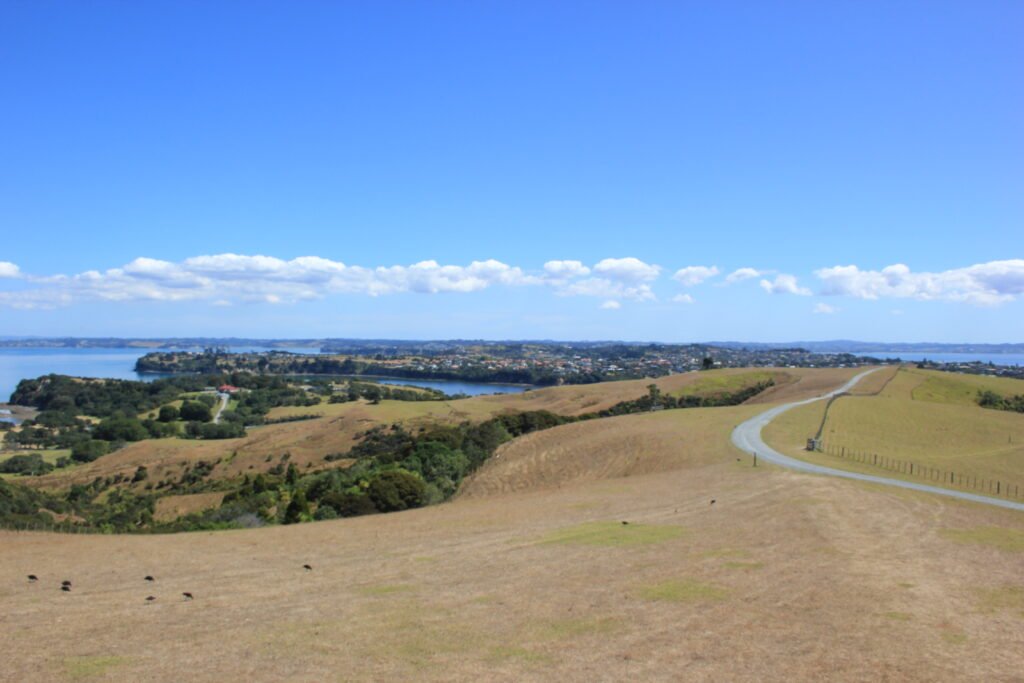
N.Z. sits in one of a number of kinks in the International Date Line which otherwise would almost nudge the most easterly point of NZ. We were on the other side of the world. With NZ summertime we were 13 hours ahead of the UK.
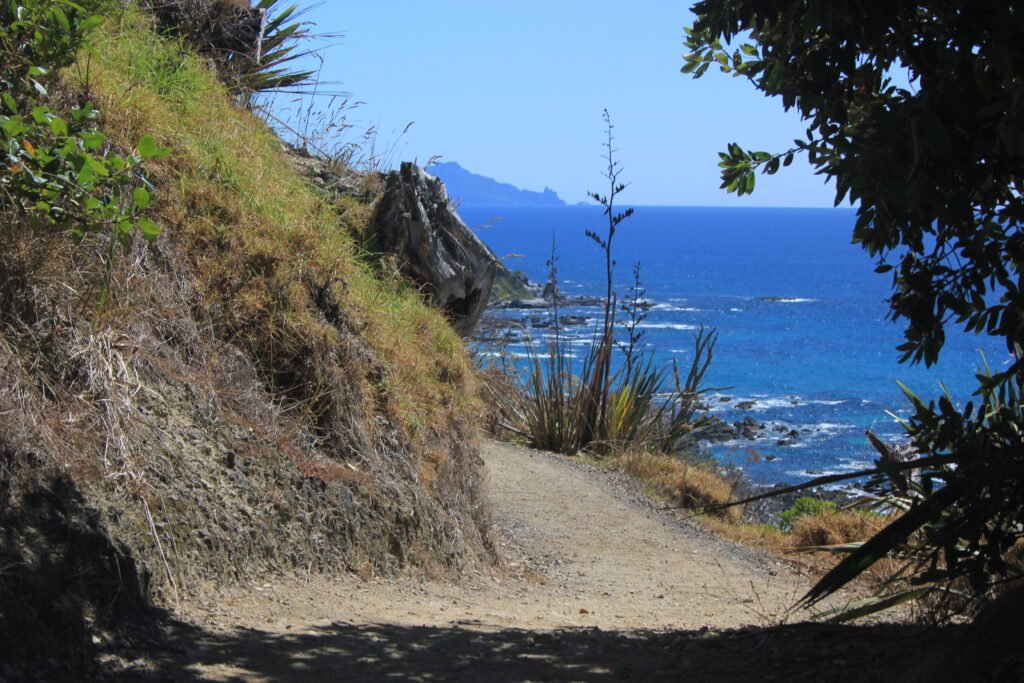
We did the Mangawhai Cliff walk: supposed to be one of the best in NZ. It was spectacular but quite demanding for septuagenarians!

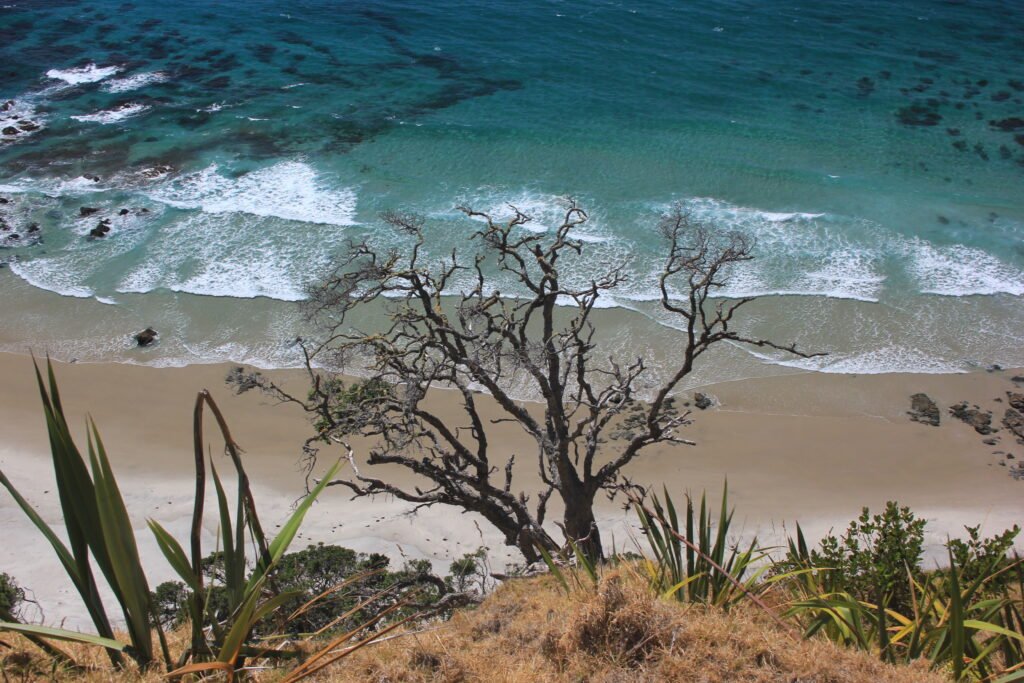
After several hundred steps cut into the hill for the path going up, we managed easily a section that the guidebook described as “up and down on the same level”. Having done a significant section of the South West Coast Path, which, if completed, is equivalent to going up and down Everest four times, I could not help but reflect that this marvellous phrase was an interesting linguistic device applicable to many coastal walks!
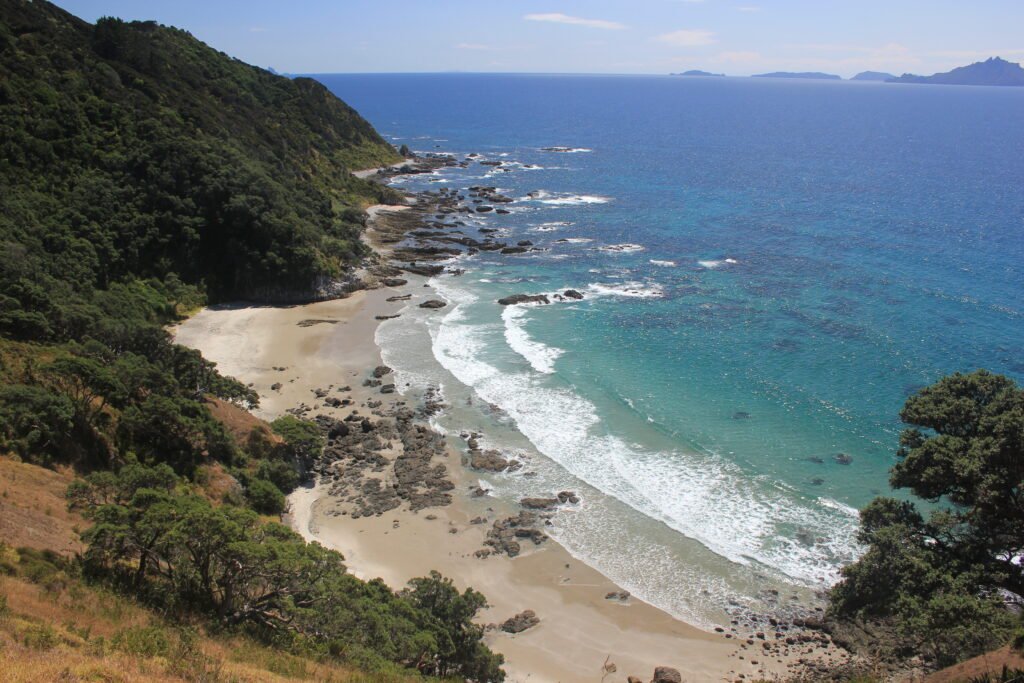
With fantastic views, the benefit of this walk was that the return could be done at low tide along the beach for those prepared to scramble over some rocky stretches as well.
For our final few nights, we stayed within commuting distance of Auckland. The intensity and pressures of city life: density of housing, industrial areas, shopping centres, traffic all gradually ramp up the closer you get….. hence the poetic licence in the title ‘ the beauty and the beast’ …. potential to wind up some city-loving readers!

However, the amazing NZ geography allows the contrasts to live side by side. We have come across several Regional Parks. Yesterday, we explored Shakespeare Park on the end of a ten-mile-long, well-populated peninsula. This type of ‘selfie-frame’ can be found at several tourist destinations …. but I could not persuade the subject to perform graceful turns and gymnastics on the bottom edge!
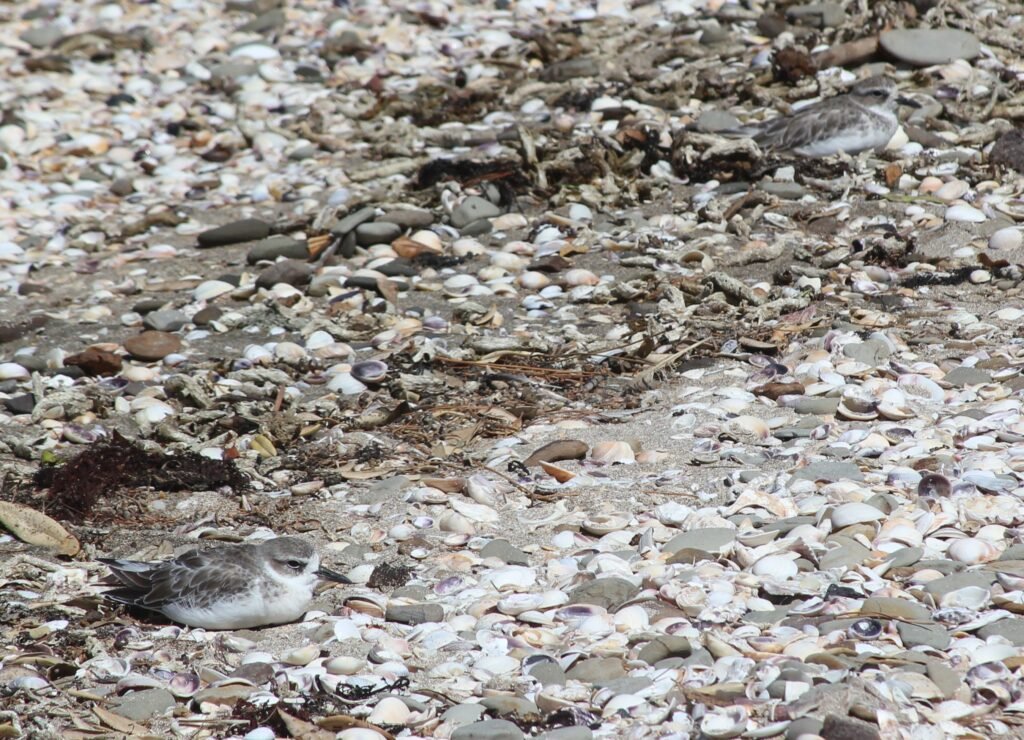
The park is now a nature reserve fenced off with a 1.7km six-foot small mesh fence costing $750k. This allows invasive non-native species to be eliminated and threatened native species to be reintroduced. I was fortunate to come across a pair of Dotterels. See in the above picture – incrdeibly well disguised. They are an at-risk’ species. These peninsulas all jut out into the Haraki Gulf. From their vantage points, we could see on the horizon most of the places we had visited: from Auckland in the south, Coromandel in the east, this picture, and back up the coast to Whangarei in the North.

For our last day by ourselves, we decided to go all the way (at this point about 15 miles in a straight line!) across from the east to the west coast to Kiapara Harbour which is the largest natural harbour in the southern hemisphere. We ended up at a place called Shelly Beach.
Masses of oyster catchers were lined up at the edge waiting for the tide to go down and their feeding grounds to be exposed. It was one of our few cloudy days… bright sunshine two hours later.
5. POST SCRIPT: IMAGES FROM THE CUTTING FLOOR
In six weeks away we flew almost 25,000 miles and drove nearly 1600 miles. I took about 700 pictures. I used only a few of these to record and share the headline story of our journey. Our visit a few years earlier was intended to be a once in a lifetime visit to New Zealand.
We ticked most of the amazing tourist boxes on the North and South Islands. This trip was quite different. We got well below the tourism belt, explored areas not usually on the foreign tourist bucket list, and saw things that most of those tourists miss.
Here are a few fairly random images, too good to miss, that I have not so far shared. Images that say everything and nothing. Images that do not show the journey but do tell the story.
So, in no particular order:
We came across a garden centre with a great sculpture trail and some interesting takes on normal things like these gates. The ingenious tap and wash basin in their loo took some beating.
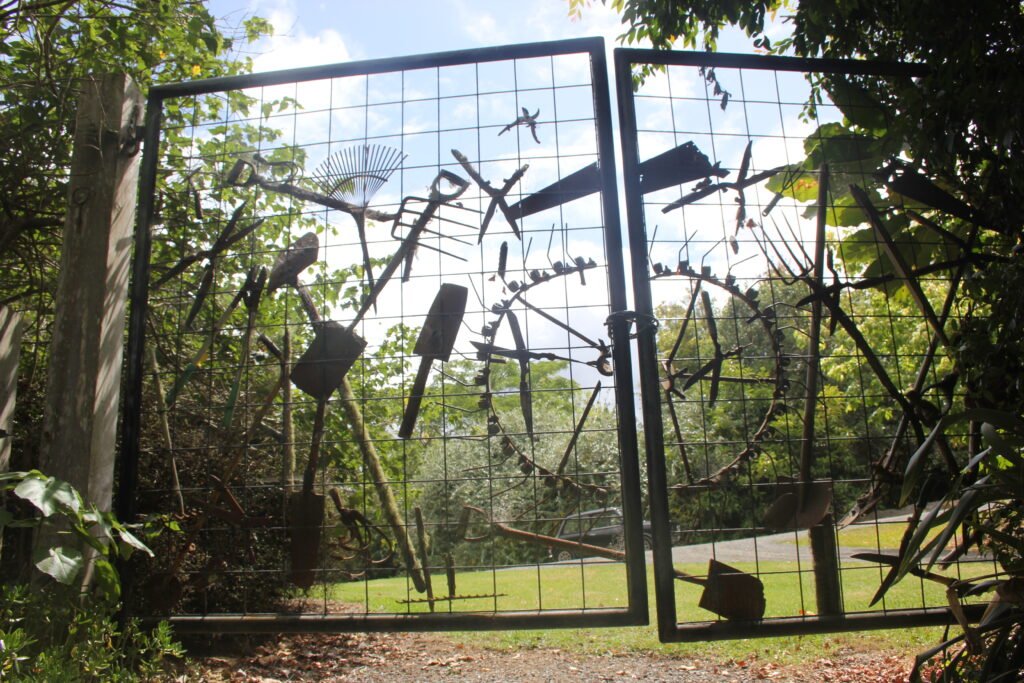
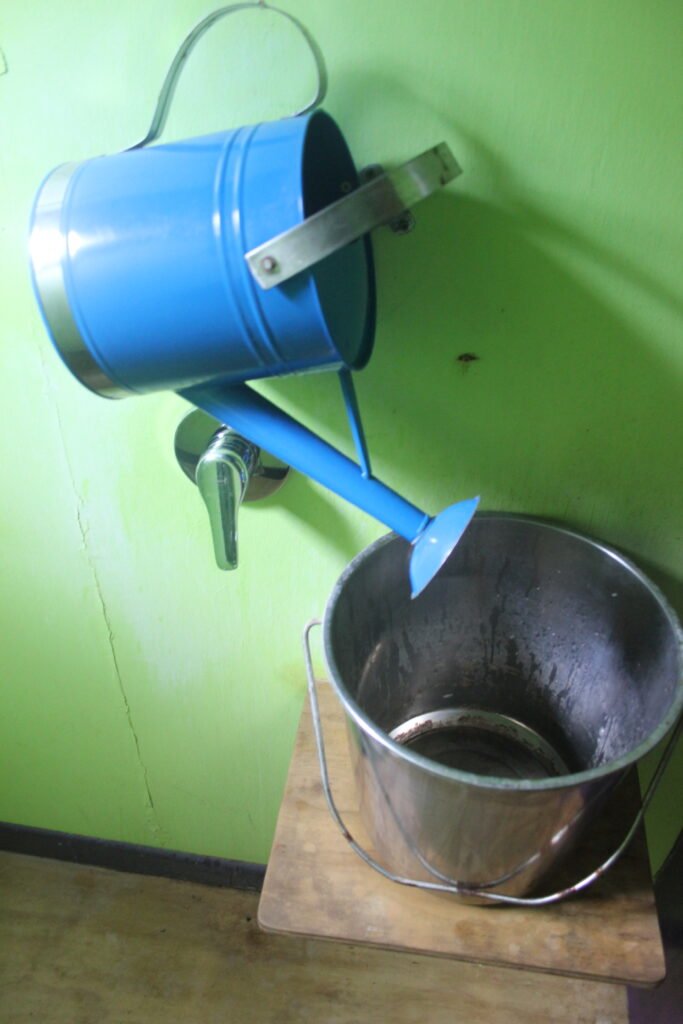
But nothing could challenge the loo at this quirky café, Eutopia, for sheer imagination and style.
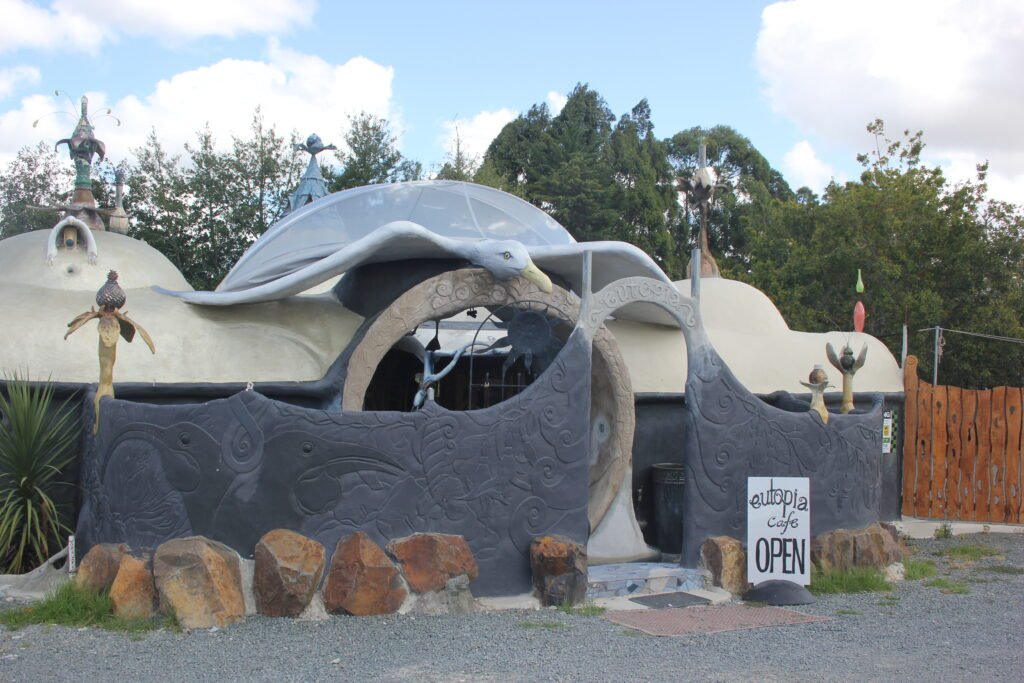
From outside it was obvious the loo would be different.
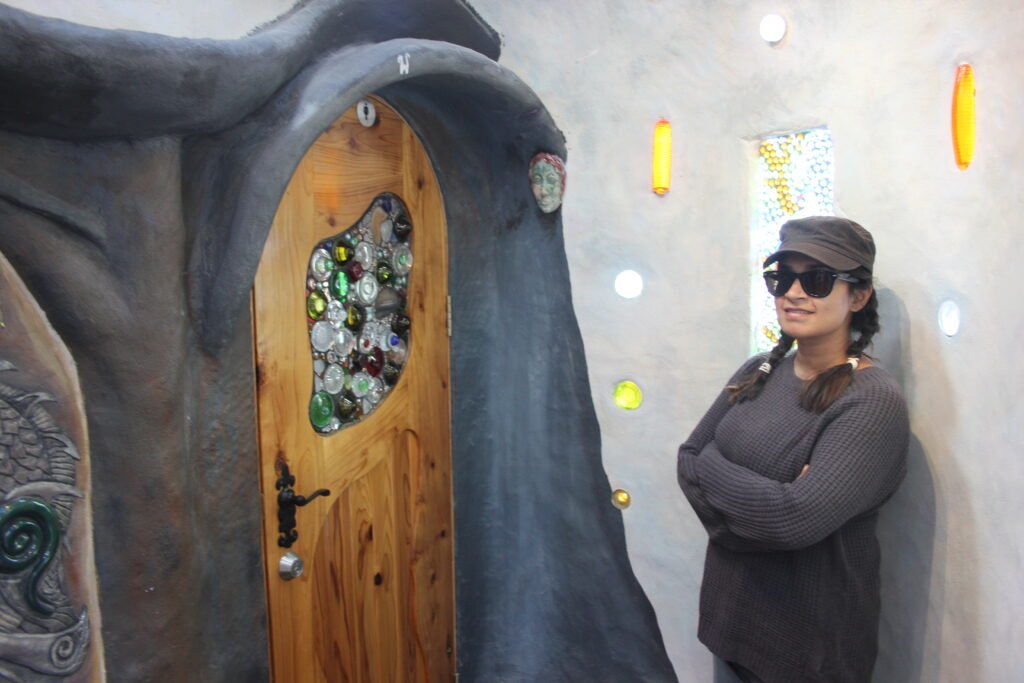
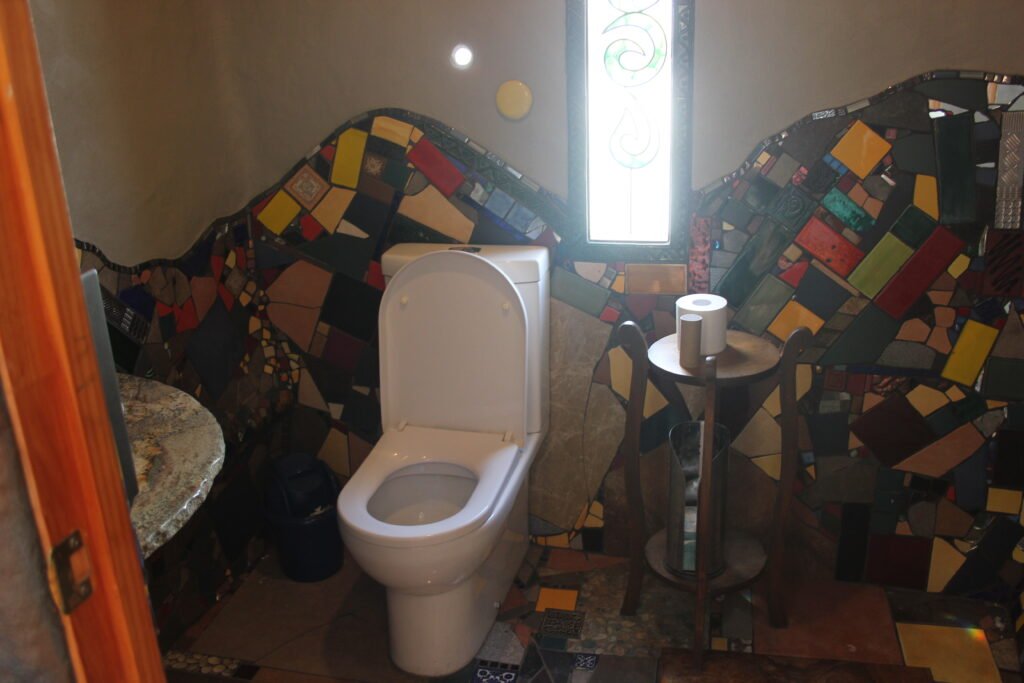
It was! Throughout the whole cafe, intricate tiling, using all shapes and sizes and glass tile fragments, made amazing mosaics on irregular-shaped rooms. The doors, windows and furniture were all uniquely carved.
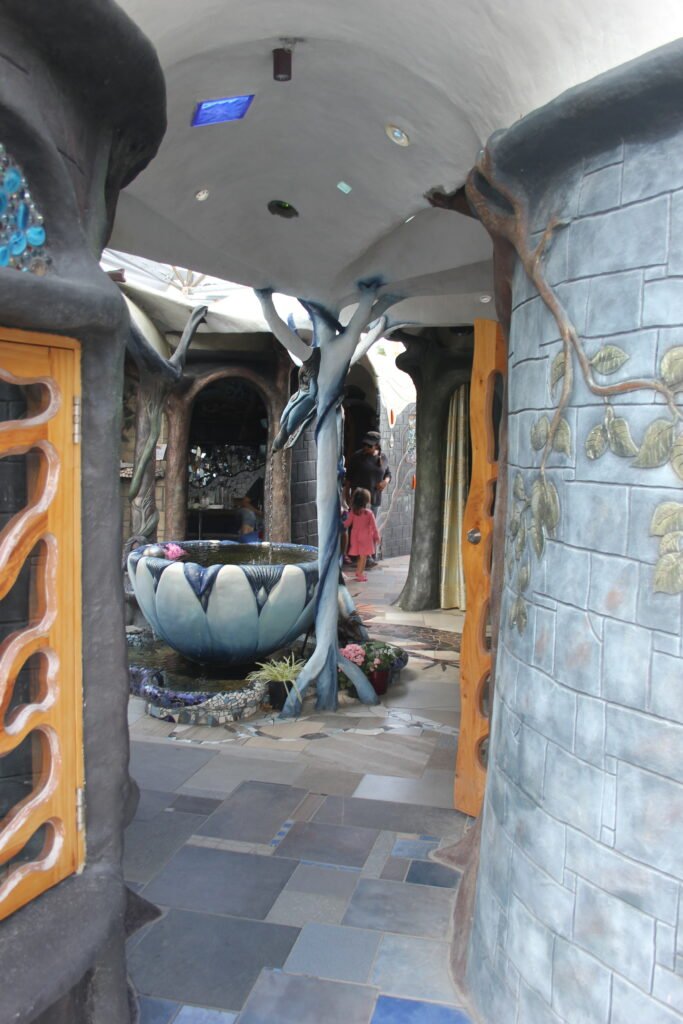
The ‘reception area’ with its mini atrium and water feature was incredible. It just shows what can be done by thinking outside the box.
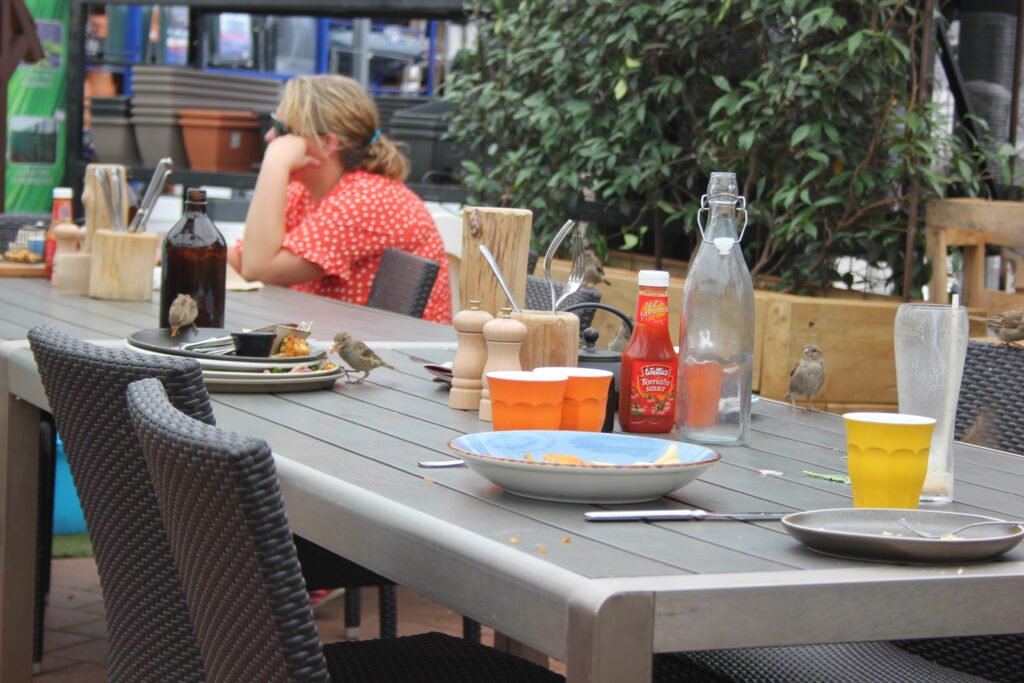
Then there were The Birds ….. the feathered ones of course…… at a good number of the eating places we visited. Given half a chance, the sparrows will help clear away, even before you finish if you are not careful.
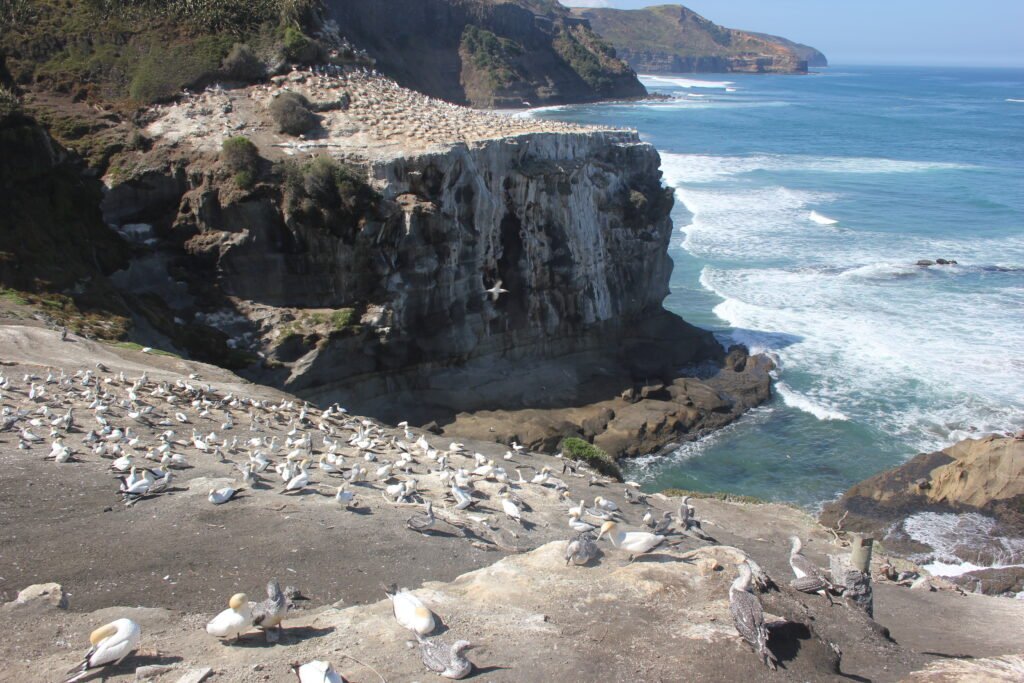
The Gannet Colony at Bethells Beach on the west coast has grown to around 1000 pairs. The large chicks were on the point of flying and spent ages flapping their wings. Some were so close to the viewing deck you could almost touch them: magnificent sight but a pungent smell from this large colony.
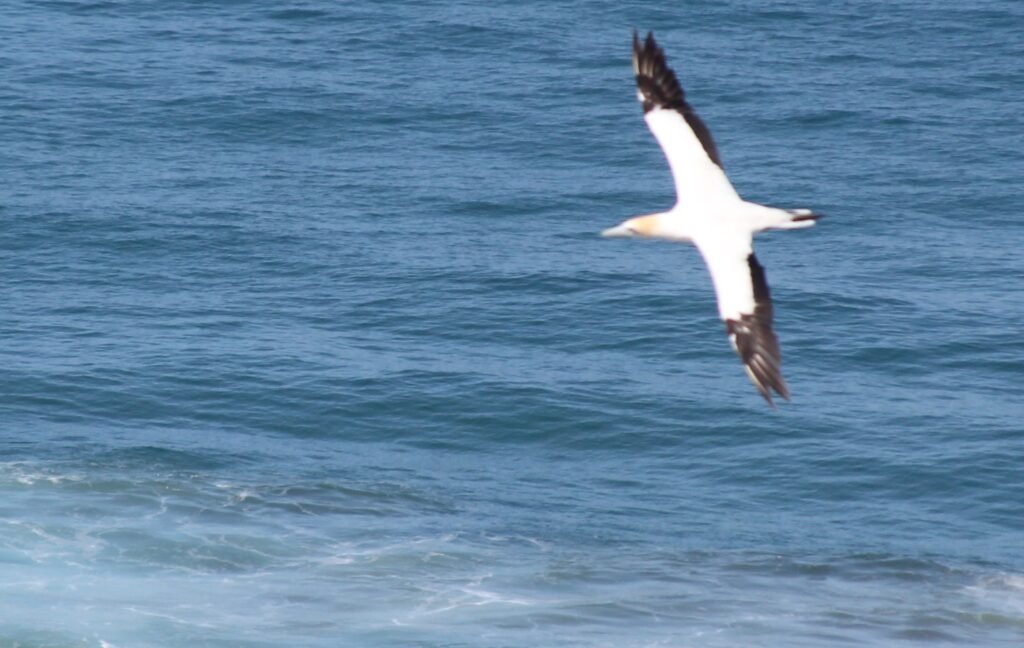
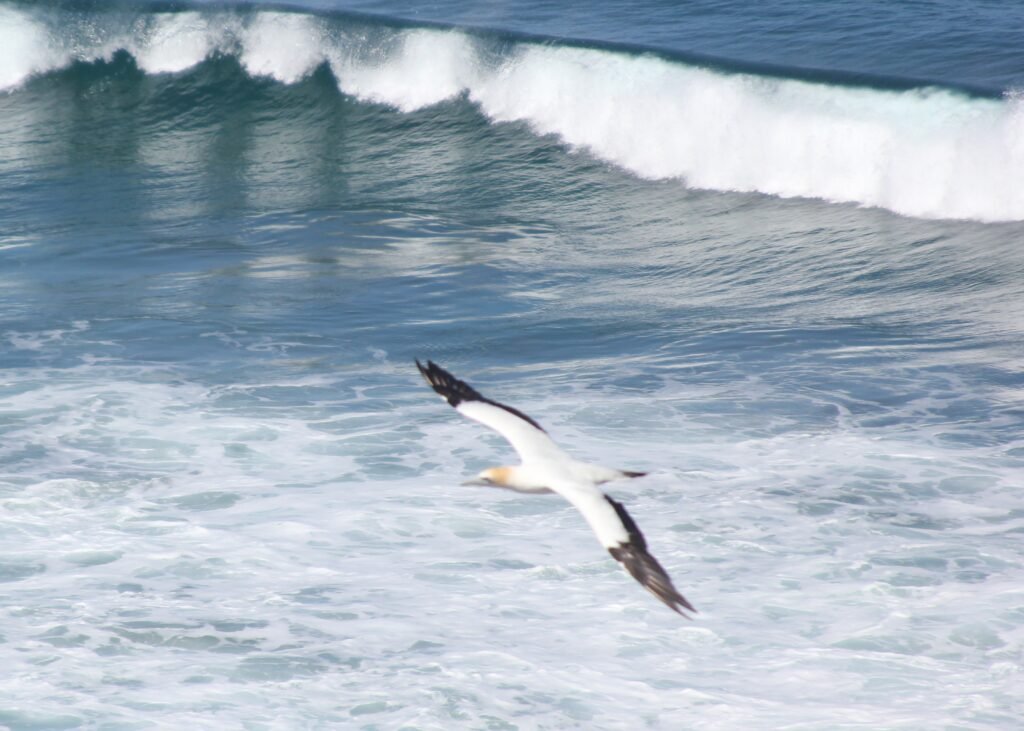
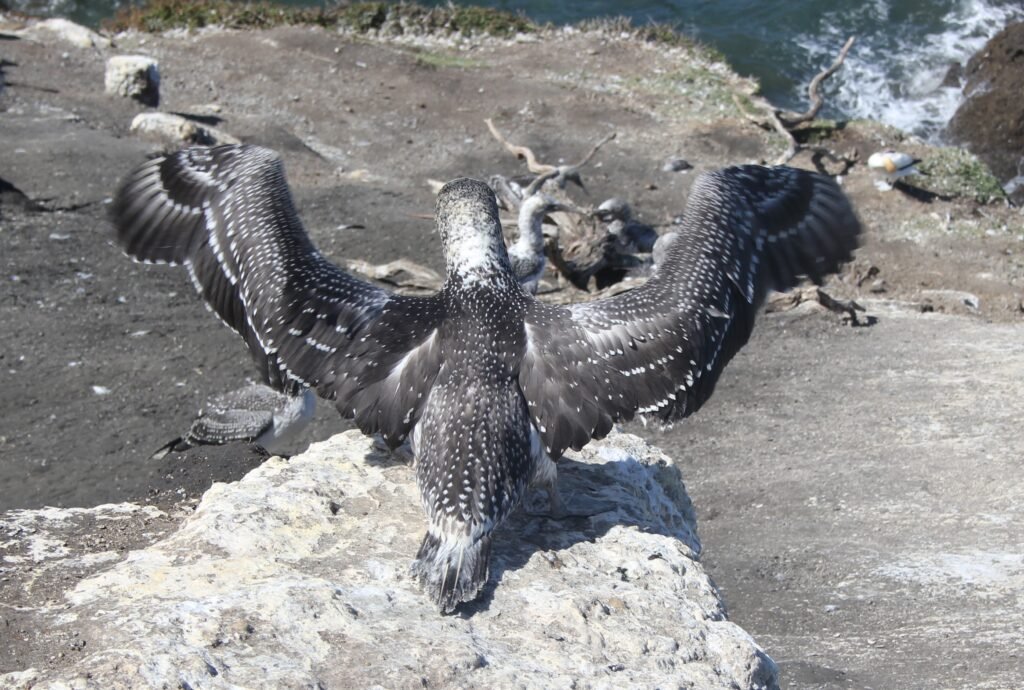
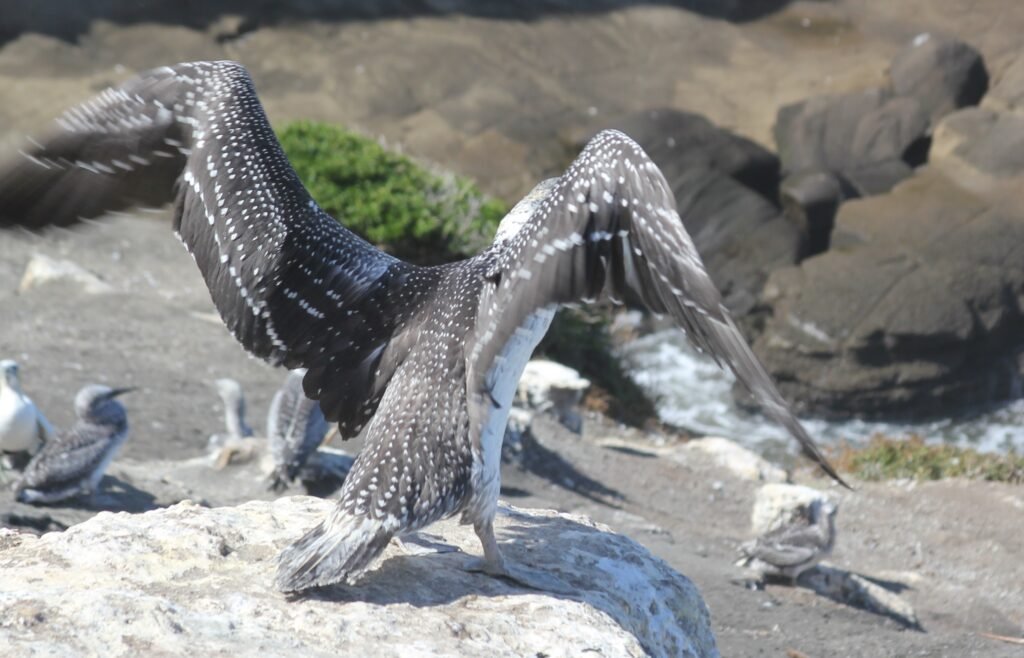
Most of the large chicks spent ages flapping their wings.. ready to fly.
The birds at Shelly Beach were on parade.
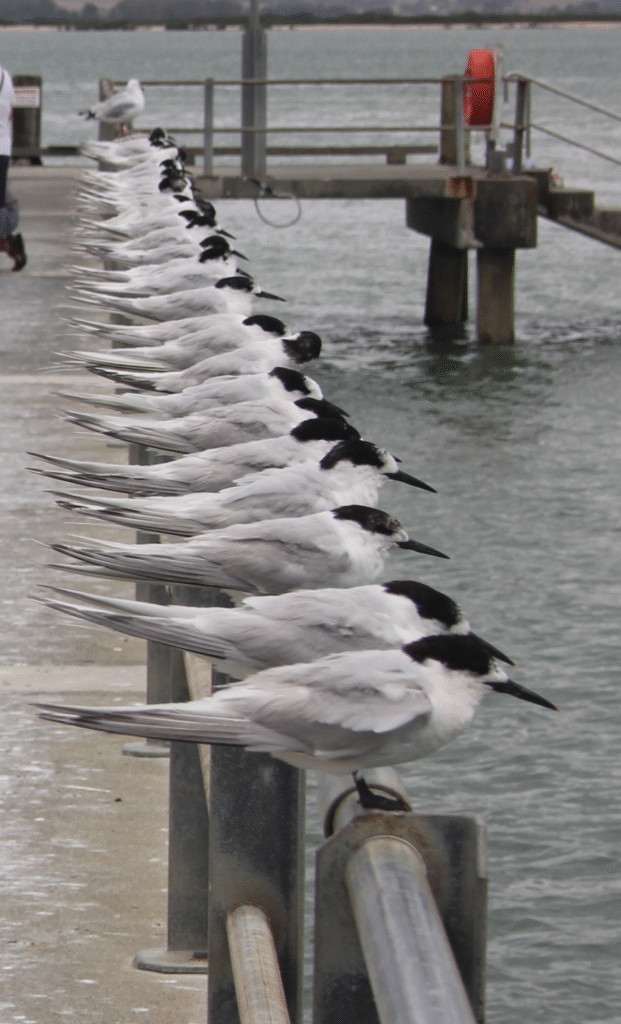
As were a couple of veterans for pulling boats out… this one was carefully held together by tape and string, but the essentials were well oiled and ready to go. Don’t expect a comfortable ride, but admire the can-do attitude which was still alive in much of NZ but seems in scarce supply at home!
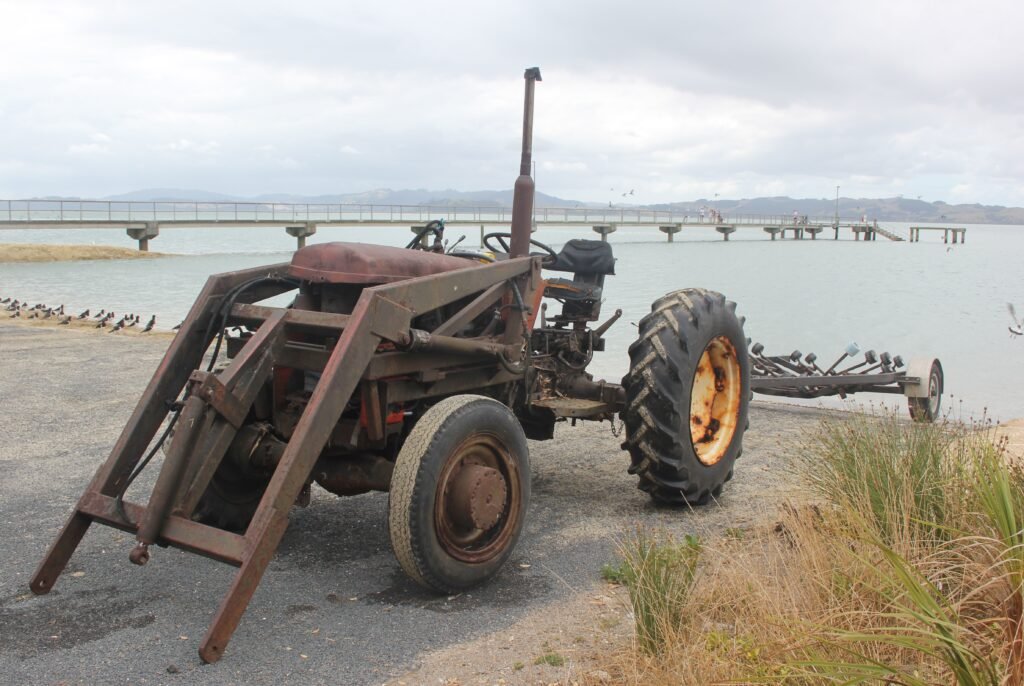
Sea-fishing is a massive pastime: boat ownership is an essential Kiwi lifestyle component ………….
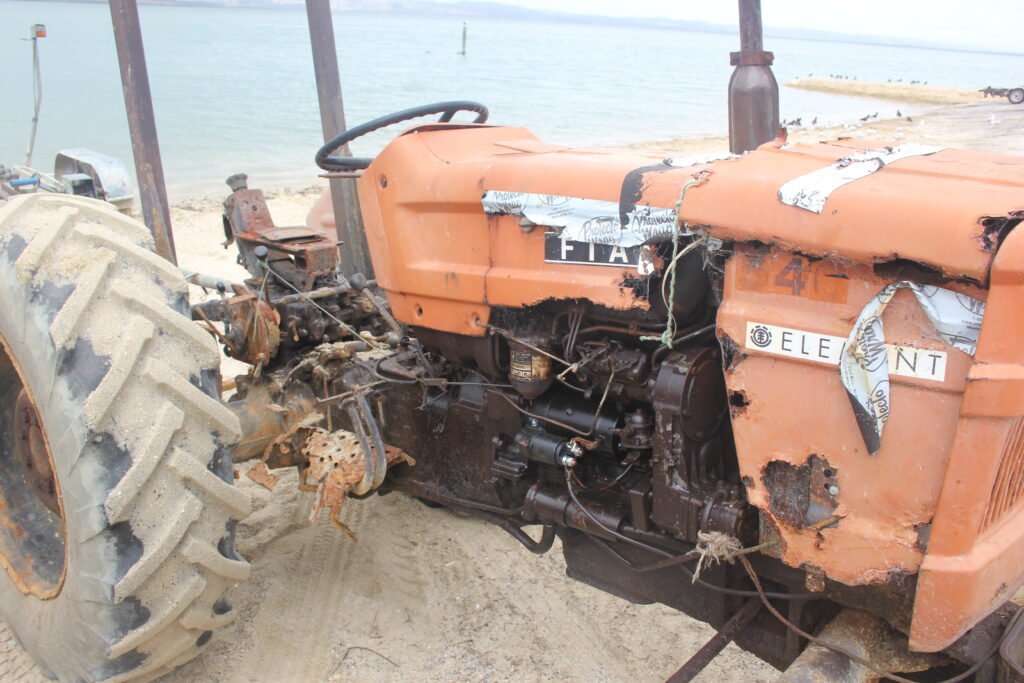
plus the old tractor to launch your boat – my style!
These next two come under the heading ” UK Councils eat your heart out!” If you don’t put your bin out the right way round in the right place, it is not collected. This one man, robotically assisted, collection seemed to work a treat.


The intriguing home below belongs to the Nursery Web Spider. The female deposits her eggs and builds a web around them allowing the young spiderlings to grow up protected until they are ready to leave. 😒
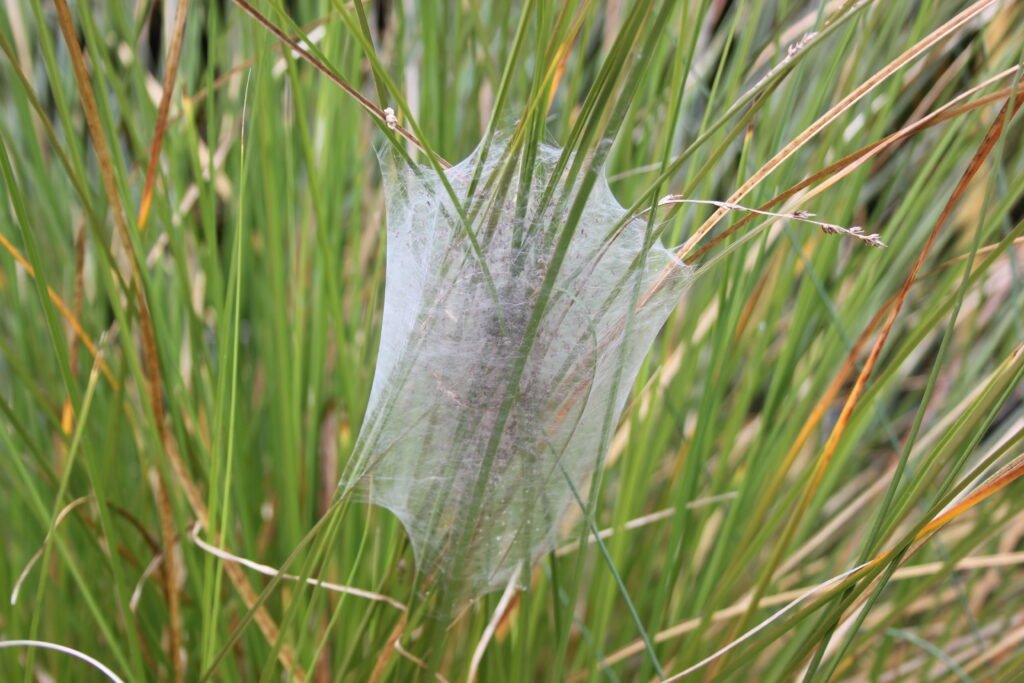
In some ways these small things summed up our wonderful second visit to New Zealand.
Primarily, it was a lovely family time with some tourist bits, mostly off the beaten track, thrown in the mix. Our second visit to New Zealand was quite different.
From Auckland late summer we went back to England’s late winter – literally from drought to floods. A few weeks later we were all in lockdown! Very, very, few people had an absolutely brilliant holiday in 2020. We did.
